Xantech Hidden Link 29185D Handleiding
Bekijk gratis de handleiding van Xantech Hidden Link 29185D (4 pagina’s), behorend tot de categorie Receiver. Deze gids werd als nuttig beoordeeld door 107 mensen en kreeg gemiddeld 3.8 sterren uit 54 reviews. Heb je een vraag over Xantech Hidden Link 29185D of wil je andere gebruikers van dit product iets vragen? Stel een vraag
Pagina 1/4

MODEL
29185D
Hidden Link™ Shelf Top
CFL/LCD Proof IR Receiver
INSTALLATION INSTRUCTIONS
DESCRIPTION
The Hidden Link IR Receiver is a small shelf-top infrared repeater assembly.
It includes an IR receiver and a CB12 Connecting Block. The Hidden Link IR
Receiver is equipped with a 7-foot cable and a 3.5mm stereo mini plug,
which is plugged directly into the “IR RCVR” jack on the CB12. It can also be
plugged into the “AUX” or “IR RCVR” jack of other Xantech connecting
blocks, such as the models 789-44, CB60, and 791-44. The Hidden Link IR
Receiver is primarily intended for use in installations where the connecting
block is within reach of its 7-foot cable – as when installing the Hidden Link
IR Receiver in a cabinet where the controlled equipment is behind closed
doors.
FEATURES
• Very small package, only 2.00”L x 3.15”W x 0.70”H.
• System testing red-talk-back LED.
• Includes CB12 Connecting Block for easy system installation.
SPECIFICATIONS
• Infrared carrier input frequency bandwidth: 30 - 60kHz.
• Reception range: Up to 50 feet, depending on conditions.
• Nominal reception angle: 55 degrees off axis.
• Cable requirements: See “INSTALLATION” below.
• Max. transmission length: 1 mile using 18 gauge wire.
• Maximum current output: 100mA
• Drives IR emitters through Xantech Connecting Blocks, Controllers, etc.
• Dimensions: 2.00”x3.15”x0.70” (51mm x 80mm x 18mm)
• Power requirements: +12VDC, 20mA.
INSTALLATION
QUICK-START
A typical system will use an IR receiver, several emitters, and a power supply
all connected to a connecting block.
1. Connect the IR receiver to the “IR RCVR” port on the connecting
block. The ‘red’ connector is installed to the ‘red’ plug.
Note: In some extended distances, additional 3-conductor may be required and can
be connected to the terminals on the connecting block.
2. Connect the Emitters to the connecting block. The ‘yellow’ connector
is installed to the ‘yellow’ plug.
3. Connect the power supply to the connecting block.
4. Installation complete
LOCAL SYSTEM APPLICATION
In this system a 286D Dual Blink-IR Designer Emitter is shown connected to
the “OUT” jack. A single emitter could also be used, such as the model 282D
or 283D. If expansion beyond two emitters is required, use a Xantech 789-
44, CB60, or 791-44 Connecting Block in place of the CB12. Do not use the
CB12 in this case.

CABLE CONNECTIONS
291’s may also be used where the 7-foot cable is not long enough. Simply
cut off the mini plug, strip the leads and splice them to a 3-conductor
extension cable with a terminal block or other means. Then connect the
extension cable to the 3-terminal block on the CB12 as shown in the figure
below.
3.5mm mini plug Signal Name
TIP SIGNAL
RING GROUND
SLEEVE +12VDC
The 3-conductor inter-room cable (24 gauge up to 200’, 22 gauge up to 600’,
20 gauge up to 2000’, 18 gauge up to 5000’), is run to the main room.
While it is possible to make wired connections without the connecting block,
it is not recommended. The connecting block reduces installation time, helps
to eliminate errors, allows easy troubleshooting and permits easy system
upgrades later, if needed.
REMOTE ROOM APPLICATION
The CB12 Connecting Block, supplied with the Hidden Link IR Receiver, has
a three terminal input strip for connection of external infrared receivers
should you wish to control your equipment from other rooms.
• The terminals are marked V G S. (V = +12V, G = Ground, and S = IR
Signal).
• Make connections as shown in the figure below. Run a 3-conductor
cable (24 to 18 gauge wire, stranded or solid) from each remote
room to the VGS terminals of the CB12.
• When you use a Hidden Link IR Receiver in a remote room, do not
plug in a power supply or use the “OUT” jack in the CB12, as shown
in the figure below.
• You may use more IR receivers, connected in the same manner, up
to a maximum of 12.
PLACEMENT
The IR receiver should be located so that it is not directly facing a light
source such as lamps or displays (standard, LCD, and Plasma). When
mounted near a display, it should be flush to the display and away from light
reflections that may occur.

ADJUSTING THE IR CARRIER FREQUENCY
The 29185D is factory set to an IR carrier repeat frequency of 38kHz. This
will be correct for the majority of installations. However, some manufacturer’s
components that you wish to control may use different carrier frequencies
(such as the RCA DSS receivers that use 56kHz). If such carrier frequencies
fall within the range of 32kHz to 56kHz, you can adjust the 29185D to match
tem for best range performance. The adjustment can be made through the
small thumbwheel on the rear of the unit.
To adjust, proceed as follows:
1. First, try the IR receiver in the system. If the system controls all the
desired components with adequate range, do not make any
adjustments.
2. If the system does not work or has poor range, determine the IR
carrier frequency of the product you wish to control. Contact the
manufacturer of the product, if necessary, to determine this
frequency.
3. Facing the rear of the unit, rotate the thumb-wheel adjustment
slightly either left to obtain carrier’s less than 38kHz or right to obtain
carrier’s greater than 38kHz .
4. If you have audio/video equipment in the same system that has
different IR carrier frequencies, you will have to adjust the IR receiver
to the midway position. For example, some products may operate at
38kHz and others at 56kHz. In this case, set the adjustment in
between this range so both products can operate in the system.
Note: Some products are more tolerant of compromised frequency settings than
others. You may have to “fine tune” the adjustment to “favor” the least tolerant
component for the best performance of all units in the system.
TROUBLE SHOOTING:
1. Perhaps the most common problem you may encounter is stray IR
(infrared) or RF (radio frequency) interference preventing proper
operation of the controlled equipment.
• Fluorescent, Compact Fluorescent, Neon or Halogen lights,
Neon Art, and light dimmers.
• Direct of reflected sunlight.
• Infrared security sensors (active types).
• RF radiation from TV sets that may be close to the Hidden
Link IR Receiver.
2. You can confirm the source of the interference by temporarily turning
off TV sets, isolating the Hidden Link IR Receiver from all sunlight
and turning off all lights, light dimmers and Infrared security systems.
Then check to see if the Hidden Link IR Receiver operates the
component.
• Sometimes interference will cause the red Talk-Back LED on
the front of the Hidden Link IR Receiver to blink dimly,
intermittently, or continuously.
• The Talk-Back Led should only blink when you are sending
infrared commands to the Hidden Link IR receiver from a
remote control.
• It may be necessary to move either the interfering source of
the Hidden Link IR Receiver to achieve proper operation.
3. If the Talk-Back LED or the 286D Emitters do not blink when you are
sending IR commands to the Hidden Link IR Receiver from a remote
control, check the following:
• Make sure the power supply is plugged securely into a live
AC electrical outlet.
• Be sure the stereo mini plug of the Hidden Link IR Receiver
is plugged into the “IR RCVR” jack on the CB12 Connecting
Block, not into the “OUT” jack.
• Check to see that all the mini plugs are properly seated into
the mini jacks on the CB12 Connecting Block.
4. If the 286D Emitters blink, but the component does not respond,
reposition the 286D Emitter(s). They may not be located directly over
the component’s infrared receiving “window”. Consul the owner’s
manual of the unit or the manufacturer for the exact location of the
infrared “window”.
Limited Warranty
Xantech® warrants its products to be free of defects in materials or workmanship. This is a
Limited Lifetime warranty from the date of purchase by the original consumer. Any products
returned to Xantech and found to be defective by Xantech within the warranty period will be
repaired or replaced, at Xantech’s option, at no charge. Xantech will not be responsible for the
actual cost of installation or removal of the product, nor for any incidental or consequential
damages. Some states do not allow the exclusion or limitation of incidental or consequential
damages, so the above limitation may not apply to you. This warranty gives you specific legal
rights. You may have additional legal rights that vary from state to state.
Xantech Corporation
13100 Telfair Ave. 2F, Sylmar CA 91342 | Xantech.com
Installation Instructions, 29185D © 2008 Xantech Corporation
Document # 08905178A
This document is copyright protected. No part of this manual may be copied or reproduced in
any form without prior written consent from Xantech Corporation. Xantech Corporation shall not
be liable for operational, technical, or editorial errors/omissions made in this document.
Product specificaties
| Merk: | Xantech |
| Categorie: | Receiver |
| Model: | Hidden Link 29185D |
Heb je hulp nodig?
Als je hulp nodig hebt met Xantech Hidden Link 29185D stel dan hieronder een vraag en andere gebruikers zullen je antwoorden
Handleiding Receiver Xantech
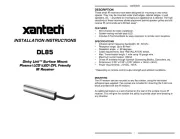
2 Mei 2025

5 Januari 2024

4 Januari 2024

4 Januari 2024

15 September 2023

15 September 2023

21 Februari 2023

21 Februari 2023
Handleiding Receiver
- Atlona
- Atoll
- Stiflix
- MuxLab
- Arcam
- Dimavery
- Soundtrack
- TechLogix Networx
- Panasonic
- Canton
- Technics
- Integra
- JBL
- Audio Research
- Astell&Kern
Nieuwste handleidingen voor Receiver
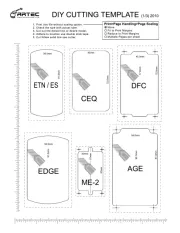
30 Juli 2025
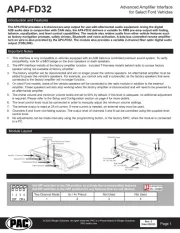
29 Juli 2025
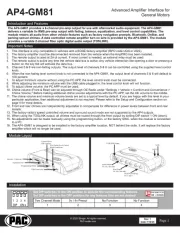
29 Juli 2025

29 Juli 2025
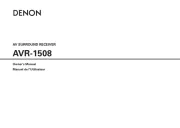
29 Juli 2025
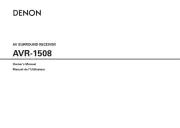
29 Juli 2025
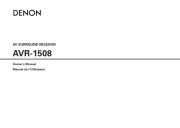
29 Juli 2025
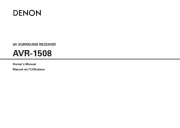
29 Juli 2025

29 Juli 2025
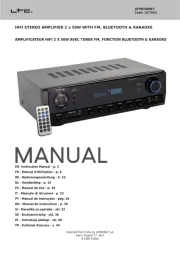
28 Juli 2025